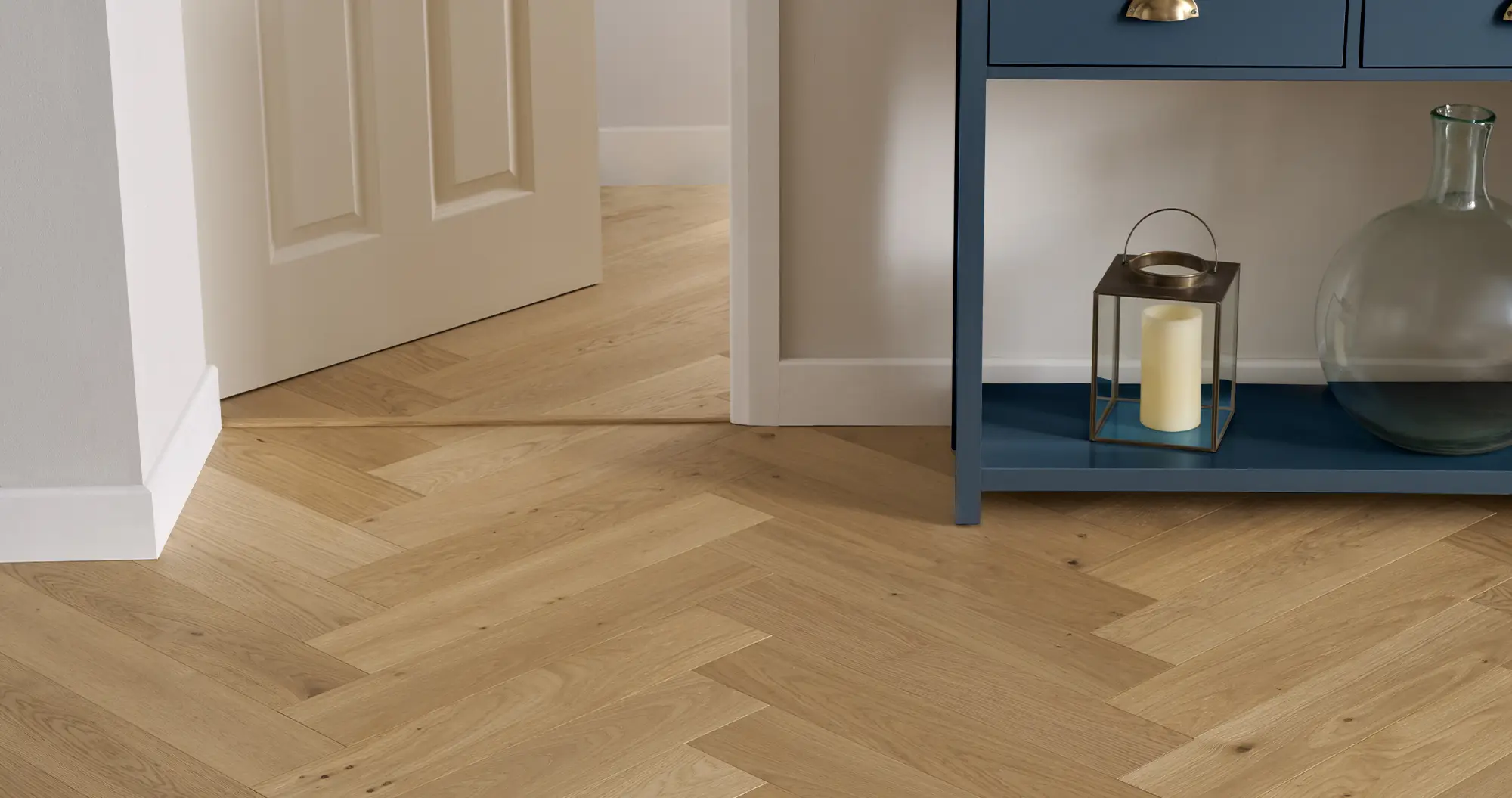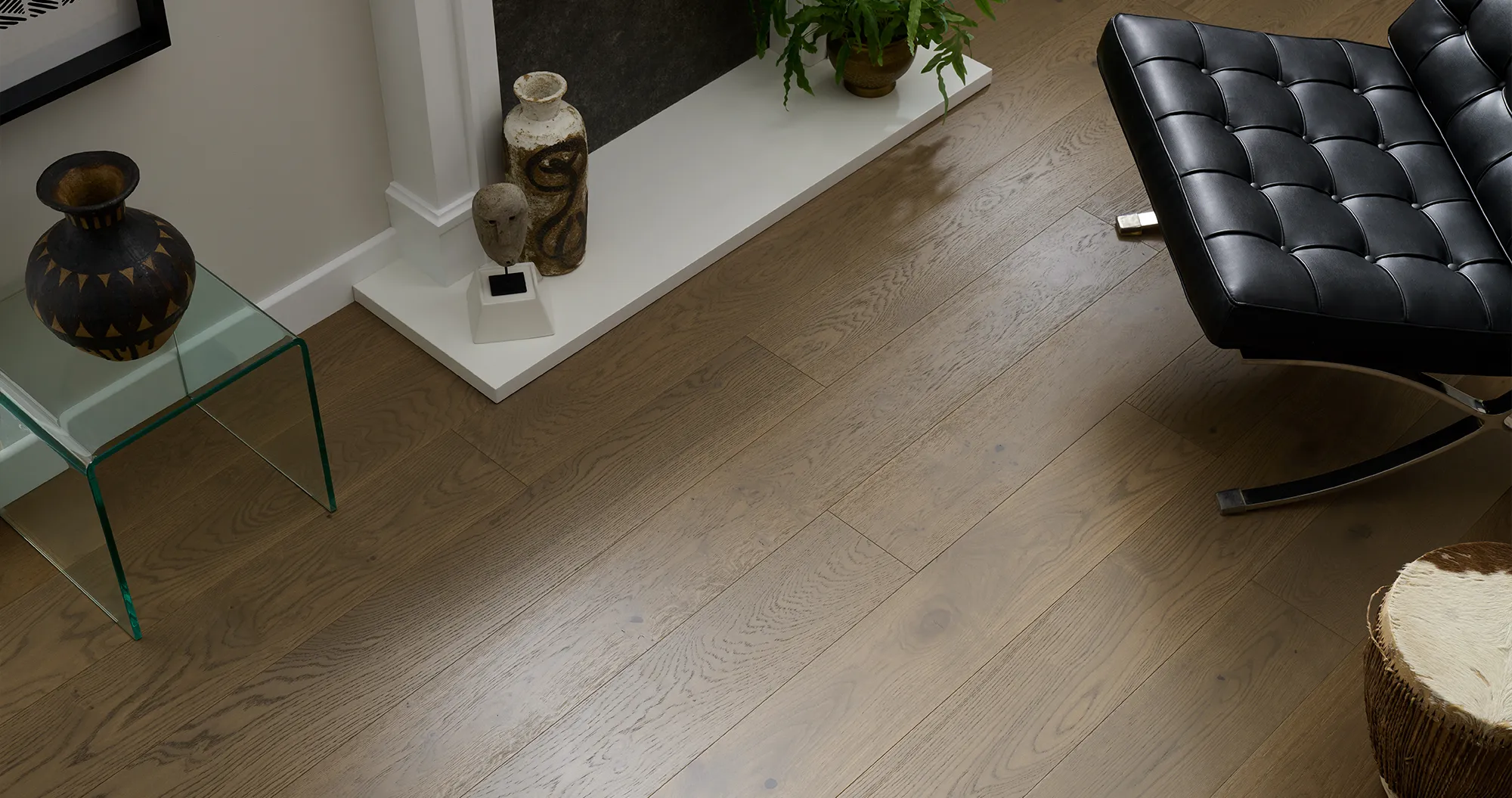Gaps in Wood Floor Boards: Causes & Fixes
You’ll often be the first to hear from customers about gaps appearing in their wood floors. This guide will help you understand why it happens, how to explain it confidently, and what advice to offer customers - keeping conversations clear and professional.
1. Why Gaps Happen
Wood naturally expands and contracts as humidity and temperature change. During dry months, boards can shrink and create small gaps, while in warmer, humid periods, the boards expand again.
Key things to know:
- Movement is a natural character of wood. It's a sign of authenticity, not failure.
- If gaps are large or remain all year round, it could mean the floor wasn’t properly acclimatised or the room conditions are unstable.
- Seasonal movement is normal for both solid and engineered wood floors.
Branch tip: Remind customers to keep their home at a steady humidity level (ideally between 40–60%) to help reduce visible movement.
2. When It’s a Concern
Most gaps are harmless, but here’s when customers might need a closer look:
- The gaps are wide and don’t close up in summer.
- The boards feel loose or creak when walked on.
- There’s visible misalignment or debris getting caught between boards.

3. Repair Options You Can Mention
Repairs depend on how severe the gaps are. Here’s how you can explain possible next steps:
Situation Common Fix Key Points to Share
| Small, seasonal gaps | Leave as is | They usually close as humidity rises. Filling may restrict natural movement. |
| Larger, consistent gaps | Flexible filler or sealant | Installers can use colour-matched sealants that flex with the floor. Easy, low-profile finish that adapts to movement without cracking. |
| Irregular or wide gaps | Insert wood slivers | A professional can glue matching wood slivers and sand & seal the area. Or, mix fine wood dust with resin filler or flooring grade PVA adhesive. |
Pro tip: Always advise customers to use an experienced fitter familiar with wood movement - not general DIY fillers.

4. Preventing Gaps in Future Installs
When talking to fitters or end customers, share these key prevention tips:
- Always acclimatise wood floors in the room for before fitting. Engineered boards need to acclimatise for 3-5 days. Solid wood, for 5-7 days.
- Keep indoor humidity stable year-round.
- Leave the correct expansion gap around the room’s perimeter.
- Use the right subfloor preparation. The most important factor to successful wood floor installation is flat, dry and sound subfloors.
Gaps can look worrying to homeowners, but your reassurance makes a big difference. Movement in wood in natural as it adapts to its environment. These steps help ensure a stable, long-lasting floor and fewer post-installation issues.
What Our Customers Say
Get In Touch



 3-Day Delivery
3-Day Delivery
 Free Delivery on Flooring
Free Delivery on Flooring
 20 Year Warranty
20 Year Warranty